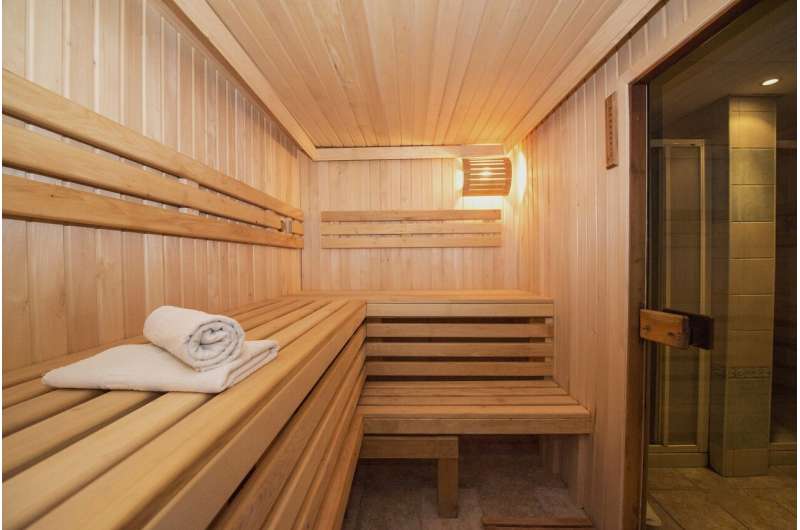Ultimate Guide to Sauna Safety: Tips for Enjoying Warmth This Winter

Discover top tips for safe and effective sauna use this winter to boost cardiovascular health, relax muscles, and improve sleep while minimizing risks. Learn how to enjoy the benefits responsibly.
Sauna bathing has become increasingly popular worldwide, especially during the colder months. Once considered a luxury or a Nordic tradition, saunas are now a common feature in gyms, hotels, leisure centers, and even private homes, offering numerous health benefits when used correctly.
A traditional Finnish sauna typically consists of a wooden room heated to temperatures between 70°C and 100°C. Users sit or lie inside, exposing their bodies to dry heat with minimal humidity, which helps prevent scalding. Sessions usually last between 10 to 20 minutes, often with breaks to cool down.
People utilize saunas not just for relaxation but also to improve sleep quality and potentially enhance overall health. Scientific research supports many of these claims, confirming that sauna use can positively influence cardiovascular health, respiratory function, musculoskeletal discomfort, and mental wellbeing.
Health Benefits Backed by Science
Cardiovascular Health: When exposed to heat, the body reacts by increasing heart rate and dilating blood vessels to manage heat dissipation — a process called vasodilation. This leads to a temporary increase in heart workload similar to mild exercise and promotes better vascular function. Long-term sauna use, especially at frequencies of 4 to 7 times weekly, has been linked to a 50% reduction in mortality from cardiovascular diseases.
Respiratory and Immune Function: The warm, dry air can help open airways, loosen mucus, and ease breathing, which benefits those with asthma or bronchitis. Additionally, regular sauna exposure may bolster immune response, potentially reducing the frequency of colds.
Relief from Musculoskeletal Pain: The heat relaxes muscles, alleviates joint stiffness, and triggers the release of endorphins—the body's natural painkillers—beneficial for conditions like arthritis and fibromyalgia.
Sleep and Mental Health: The cooling phase after a sauna session signals from the body that it is time to sleep, improving sleep quality. Additionally, sauna-induced endorphin release can boost mood and may offer relief for depression.
Risks and Precautions
Though generally safe, sauna use has associated risks. Dizziness, fainting, nausea, and overheating are common issues, especially if users stay too long or become dehydrated. Falling asleep in the sauna can lead to dangerous heat buildup, heightening the risk of heat stroke or death. Alcohol or drug consumption increases these risks further.
Individuals at greater risk include young children, people with heart conditions, low blood pressure, or abnormal heart rhythms. Those taking medications like diuretics or beta blockers should seek medical advice before sauna use.
Tips for Safer Sauna Sessions
- Start gradually: Begin with 5–10 minute sessions, gradually increasing duration and temperature as your body adapts.
- Stay hydrated: Drink water before, during, and after the session; avoid alcohol and heavy meals beforehand.
- Cool down regularly: Use a cool shower or room between sessions to help your body tolerate more heat.
- Listen to your body: Exit immediately if you experience dizziness, nausea, chest tightness, or feeling unwell.
- Consult your doctor: If you have pre-existing health conditions, get medical clearance before sauna use.
In conclusion, saunas can be a delightful addition to your wellness routine, offering relaxation and potential health improvements. However, responsible use and awareness of body signals are essential to ensure safety and maximize benefits.
Stay Updated with Mia's Feed
Get the latest health & wellness insights delivered straight to your inbox.
Related Articles
Study Reveals Most Daily Actions Are Driven by Habit and Autopilot
Most of our daily behaviors are driven by automatic habits and environmental cues rather than conscious choices, highlighting new insights into behavior change and health interventions.
Healthy Lifestyle Changes Over 60 Can Enhance Brain Function
Discover how lifestyle changes such as healthy eating, exercise, and mental training can boost brain health and prevent cognitive decline in older adults—regardless of risk factors.
Teen Lifestyle Choices and Their Impact on Long-Term Health
New research reveals widespread unhealthy habits among teenagers, including poor diet, excessive screen time, and low physical activity, raising concerns about long-term health risks and the need for systemic interventions.
Midlife Weight Loss May Extend Longevity and Reduce Disease Risk, New Study Finds
Losing around 6.5% of body weight during middle age through diet and exercise may significantly reduce disease risk and extend lifespan, according to recent research.



